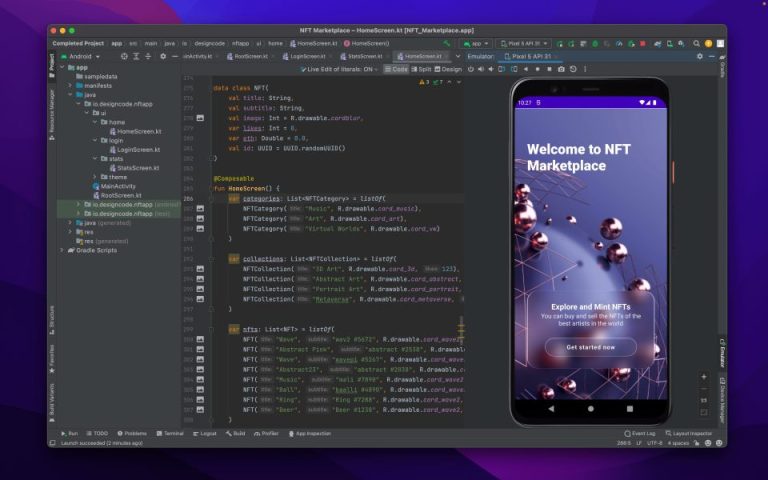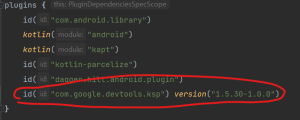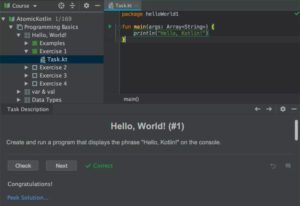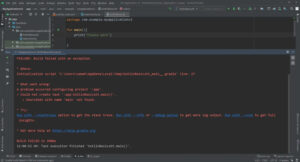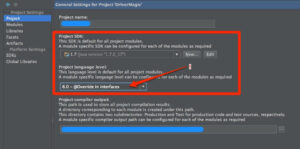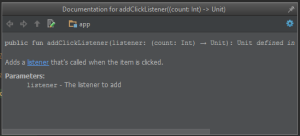Welcome to our blog where we delve into the world of Kotlin Compose, the exciting new framework for building Android user interfaces! In this post, we’ll take a closer look at what Kotlin Compose is, how it works, and why it’s quickly becoming a favorite among developers.
What is Kotlin Compose?
Kotlin Compose is a modern UI toolkit for building native Android user interfaces using the Kotlin programming language. It allows developers to build UIs using a declarative syntax, making it easier to write and maintain complex UIs. Kotlin Compose is designed to be more intuitive and efficient than traditional Android UI frameworks, making it an ideal choice for developers looking to streamline their development process.
How does Kotlin Compose work?
Kotlin Compose uses a declarative approach to building UIs, which means that you define what you want the UI to look like, and the framework takes care of the rest. This makes it much easier to build and modify UIs, as you don’t have to worry about the underlying implementation details. Kotlin Compose also utilizes a state-based approach, which allows you to easily manage the state of your UI components, making it easier to build dynamic and interactive UIs.
Why is Kotlin Compose so popular among developers?
Kotlin Compose is quickly gaining popularity among Android developers for several reasons. First and foremost, it offers a more intuitive and efficient way to build UIs compared to traditional Android UI frameworks. This makes it easier and faster to build high-quality UIs, which is essential for developers looking to create apps that stand out in a crowded marketplace. Additionally, Kotlin Compose is designed to be highly flexible, allowing developers to customize their UIs to their exact specifications. Finally, Kotlin Compose is built on the Kotlin programming language, which is becoming increasingly popular among developers due to its modern syntax and powerful features.
In conclusion, Kotlin Compose is a powerful and exciting new framework for building Android user interfaces. It offers a more intuitive and efficient way to build UIs, making it an ideal choice for developers looking to streamline their development process. With its flexible design and state-based approach, Kotlin Compose is quickly becoming a favorite among developers who want to build high-quality, dynamic, and interactive Android apps. We hope this post has given you a better understanding of what Kotlin Compose is, how it works, and why it’s becoming so popular among developers.
Kotlin Compose is a relatively new framework for building user interfaces in Android applications. It was introduced by Google in 2019 as an alternative to the traditional Android UI framework, which is based on XML layouts and imperative programming. Kotlin Compose takes a more modern approach to building UIs, using a declarative syntax and a state-based approach.
The declarative syntax used in Kotlin Compose allows developers to describe what they want the UI to look like, rather than how it should be implemented. This makes it easier to build and modify UIs, as you don’t have to worry about the underlying implementation details. The state-based approach used in Kotlin Compose makes it easier to manage the state of your UI components, allowing you to build dynamic and interactive UIs with less code.
One of the key advantages of Kotlin Compose is that it is highly customizable. It allows you to create custom UI components that can be reused across multiple screens, making it easier to maintain a consistent look and feel throughout your app. It also offers a wide range of built-in UI components that can be easily customized to match your app’s branding and design.
Another advantage of Kotlin Compose is that it is designed to be highly efficient. It uses a technique called “recomposition” to only update the parts of the UI that have changed, rather than recomputing the entire UI every time there is a change. This can lead to significant performance improvements, especially in complex UIs with many components.
Overall, Kotlin Compose offers a more modern, efficient, and customizable way to build UIs in Android applications. While it is still relatively new and may require some learning for developers who are used to traditional Android UI frameworks, it offers significant benefits in terms of ease of use, maintainability, and performance.

